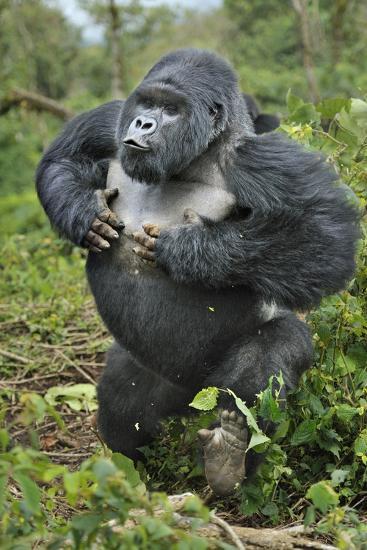HOW DO GORILLAS COMMUNICATE?
Although gorillas don’t have speaking abilities as we do, they can communicate through a variety of methods like us including body postures, facial expressions, and vocalizations.
Vocalization
Gorillas inhabit the densely forested areas where family members often cannot see each other, hence using mainly vocalization for communication. Gorilla has about 25 distinct vocalization and all have different meaning. The group leaders, Silverbacks are the ones that vocalize most.
When travelling, grunts and barks are the most frequently heard sounds. These are produced to indicated where about of other member of the family. Group members probably recognised each other from these sounds.
During social interactions, grunts and barks can also be used, especially when discipline is required. Roars and screams signal alarm or warning and these in most cases are produced the dominant silverback.
There are also deep sounds known as rumbling belches that suggest contentment and are heard frequently during feeding and resting periods.
Whimpering, crying, and screaming are commonly used by baby gorillas as means of attracting their mothers’ attention to their needs.
Gorillas can also hum or sing especially in the content of finding a highly preferred food and usually involves several individuals or the whole group doing at the same time.
Facial expression
The gorillas’ emotions can also be communicated through facial expression. Just like how you may be able to read a person’s mood by their expressions, sometimes you are able to with gorillas and apes as well. The most common and distinctive expression is the play face. Play faces consist of an open mouth with low hanging bottom lip and no teeth showing. Play face is commonly displayed by juveniles and it is often paired with the gorilla equivalent of laughter.
Like rambunctious kids, young gorillas play tag and even do somersaults. And gorillas consider staring a sign of hostility.
You may sometimes see gorillas communicate in a couple of different ways by showing their teeth. One being “bared-teeth”, where the mouth is open and both rows of teeth are showing.
This is a sign of submission or appeasement and is thought to be tied to the origins of human smiling. Particularly, male gorillas reveal their teeth through yawns. This thought to occur in a context where males are distressed or anxious and could serve as a warning sign and display of dominance.
Chest beating
Chest beating and ground thumping are also another form of communication and is mainly done by the dominant silverback to show his power and to intimidate others.
Chest beating may have different meanings and in most cases, it is a sign of aggression in males. This communication method is done by beating the chest with cupped hands; males have large air sacs located in their chests, which helps carry the sound over long distances. Chest beats are also common in younger gorillas that do it while they are playing.
Overall, the gorillas' senses resemble those of humans. They use all senses in their communication with conspecifics - not only seeing and hearing but also smelling and touching. The silverback possesses a characteristic smell. During a dangerous situation, they additionally emit a very specific scent which can be smelled many metres. It alerts other gorilla families without any noise.

Comments
Post a Comment